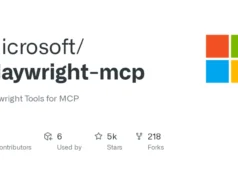This cheat sheet contains common enumeration and attack methods for Windows Active Directory.
This cheat sheet is inspired by the PayloadAllTheThings repo.
Summary
- Active Directory Exploitation Cheat Sheet
- Summary
- Tools
- Domain Enumeration
- Using PowerView
- Using AD Module
- Using BloodHound
- Remote BloodHound
- On Site BloodHound
- Using Adalanche
- Remote adalanche
- Useful Enumeration Tools
- Local Privilege Escalation
- Useful Local Priv Esc Tools
- Lateral Movement
- Powershell Remoting
- Remote Code Execution with PS Credentials
- Import a PowerShell Module and Execute its Functions Remotely
- Executing Remote Stateful commands
- Mimikatz
- Remote Desktop Protocol
- URL File Attacks
- Useful Tools
- Domain Privilege Escalation
- Kerberoast
- ASREPRoast
- Password Spray Attack
- Force Set SPN
- Abusing Shadow Copies
- List and Decrypt Stored Credentials using Mimikatz
- Unconstrained Delegation
- Constrained Delegation
- Resource Based Constrained Delegation
- DNSAdmins Abuse
- Abusing Active Directory-Integraded DNS
- Abusing Backup Operators Group
- Abusing Exchange
- Weaponizing Printer Bug
- Abusing ACLs
- Abusing IPv6 with mitm6
- SID History Abuse
- Exploiting SharePoint
- Zerologon
- PrintNightmare
- Active Directory Certificate Services
- No PAC
- Domain Persistence
- Golden Ticket Attack
- DCsync Attack
- Silver Ticket Attack
- Skeleton Key Attack
- DSRM Abuse
- Custom SSP
- Cross Forest Attacks
- Trust Tickets
- Abuse MSSQL Servers
- Breaking Forest Trusts
Tools
- Powersploit
- PowerUpSQL
- Powermad
- Impacket
- Mimikatz
- Rubeus -> Compiled Version
- BloodHound
- AD Module
- ASREPRoast
- Adalanche
Domain Enumeration
Using PowerView
- Get Current Domain:
Get-Domain - Enumerate Other Domains:
Get-Domain -Domain <DomainName> - Get Domain SID:
Get-DomainSID - Get Domain Policy:
Get-DomainPolicy
#Will show us the policy configurations of the Domain about system access or kerberos
Get-DomainPolicy | Select-Object -ExpandProperty SystemAccess
Get-DomainPolicy | Select-Object -ExpandProperty KerberosPolicy- Get Domain Controllers:
Get-DomainController
Get-DomainController -Domain <DomainName>- Enumerate Domain Users:
#Save all Domain Users to a file
Get-DomainUser | Out-File -FilePath .\DomainUsers.txt
#Will return specific properties of a specific user
Get-DomainUser -Identity [username] -Properties DisplayName, MemberOf | Format-List
#Enumerate user logged on a machine
Get-NetLoggedon -ComputerName <ComputerName>
#Enumerate Session Information for a machine
Get-NetSession -ComputerName <ComputerName>
#Enumerate domain machines of the current/specified domain where specific users are logged into
Find-DomainUserLocation -Domain <DomainName> | Select-Object UserName, SessionFromName- Enum Domain Computers:
Get-DomainComputer -Properties OperatingSystem, Name, DnsHostName | Sort-Object -Property DnsHostName
#Enumerate Live machines
Get-DomainComputer -Ping -Properties OperatingSystem, Name, DnsHostName | Sort-Object -Property DnsHostName
















.webp)









.webp)
